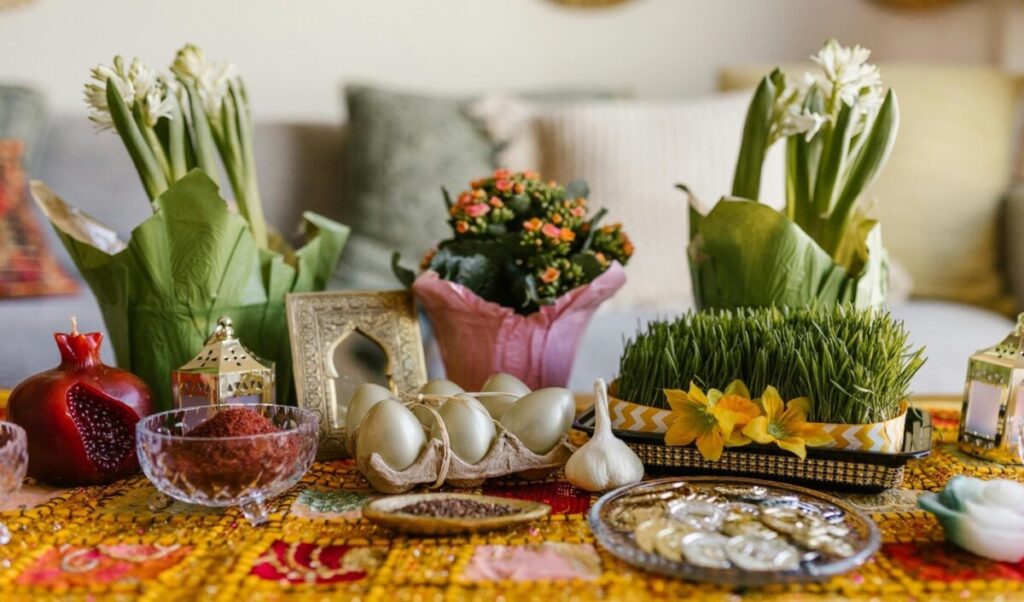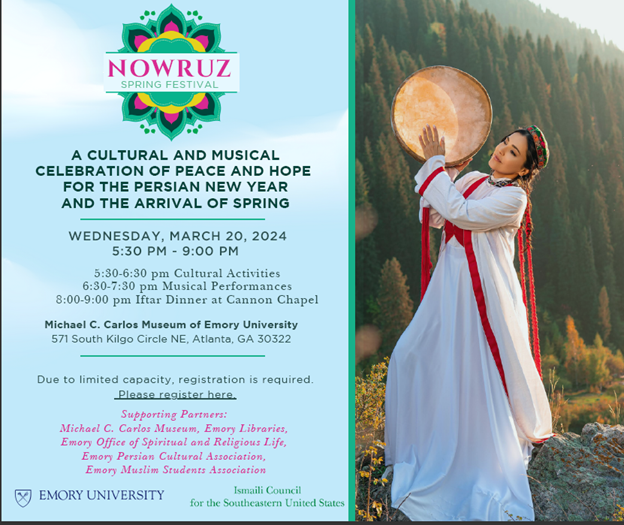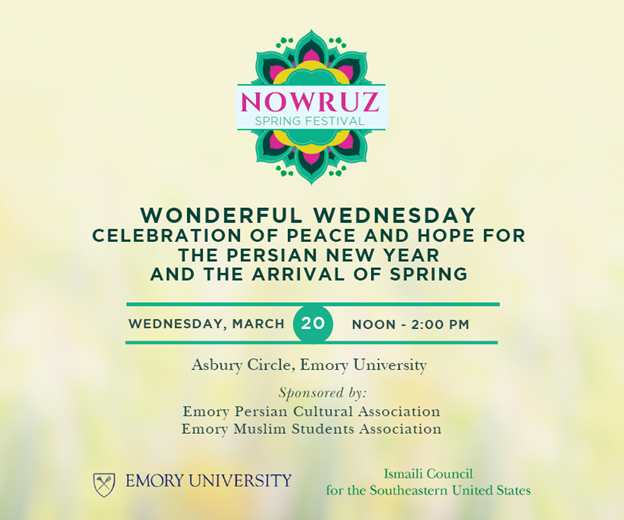
The Persian New Year, Nowruz, is rooted in Zoroastrianism, a Persian monotheistic religion that predates Christianity and Islam. Based on the Iranian Solar Hijri calendar, this national festival is a celebration of spring, tied to the equinox, and it is celebrated between March 19 and 21, mainly in Iran but also in many countries including Afghanistan, and the Kurdish regions of Iraq, Turkey and Syria, and throughout Central Asia.
Nowruz literally means “New Day” and is a celebration of spring and the activities that symbolize rebirth and renewal. Although the traditions and customs may vary from country to country and culture to culture, the central theme remains the same and various features are shared across geographical regions.
Preparations for Nowruz celebrations begin a few weeks before the start of spring. It usually begins with house cleaning (khaneh takani). All the things in the house should be cleaned, washed, and dusted. Families also grow sabzeh (using any seeds but usually wheat, barley, lentils, and cress) in a dish. Egg painting is one of children’s favorite activities at this time of the year. In most regions, people prepare fires and perform ritual dances leaping over the fires. The tradition symbolizes the victory of light and goodness over darkness and evil.
The Persian New Year doesn’t officially begin until a Haft Sin (seven items beginning with the letter S) is set up, often on a table or floor. These seven items should always be present and each of them has special meaning and refers to one important and essential aspect of Persian culture.
| Item | Symbolic meaning | |
| 1 | Sabzeh | Symbolizing rebirth and growth. |
| 2 | Samanu (Sweet pudding made from wheat) | Symbolizing sweetness and fertility. |
| 3 | Seeb (Apple) | Symbolizing beauty and health. |
| 4 | Seer (Garlic) | Symbolizing medicine and health. |
| 5 | Senjed (Dried oleaster fruit) | Symbolizing love. |
| 6 | Serkeh (Vinegar) | Symbolizing age and patience. |
| 7 | Somagh (Sumac) | Symbolizing the sunrise and new beginnings. |
In addition to the above items, families include in their Haft Sin:
The Quran (symbolizing spirituality and faith)
Goldfish (symbolizing life and the flow of time)
A mirror (symbolizing reflection and self-reflection)
Candles (symbolizing light and happiness)
Coins (symbolizing wealth and prosperity)
Sonbol, hyacinth flower, (symbolizing spring and the renewal of nature)
Sweets (symbolizing happiness and joy)
Decorated eggs (symbolizing fertility and new beginnings)
The items in Haft Sin vary depending on region and culture, but all represent good wishes and hopes for the new year.
Other Nowruz traditions include local street performances and music festivals. On the day of Nowruz, there is much feasting, visiting family members and friends, and exchanging gifts. Children often receive small toys or money. The Sizdah Bedar ceremony closes the Nowruz holiday on the 13th day of the new year (13 Farvardin). On this day Iranians leave their houses to enjoy nature and picnic outdoors.

This year, Michael C. Carlos Museum and Emory Libraries are working with Ismaili Council, Emory Office of Spiritual and Religious Life, Emory Persian Cultural Association and Emory Muslim Students Association to host an event at Emory, a cultural and musical celebration of Persian New Year and arrival of spring. The main event will be a cultural celebration in the Carlos Museum with Haft Sin table, musical performances, cultural activities, henna, and more, on Wednesday, March 20 from 5:30 to 7:30 p.m., followed by Iftar dinner at Cannon Chapel from 8 to 9 p.m. Find more information here.

Also, the Persian Student Organization and Muslim Students Association are jointly hosting and celebrating the Perian New Year on Wonderful Wednesday on the same day, March 20, from noon to 2 p.m. at Asbury Circle. This event also includes a Haft Sin table and some cultural activities. So, if you are on campus and would like to know more about the Persian New Year, we encourage you to participate in these events.
—Neda Zeraatkar, Middle East and Islamic Studies librarian
